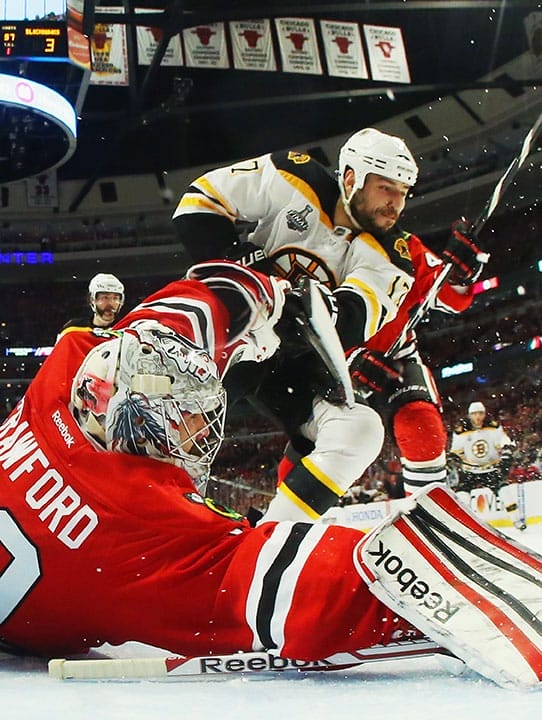Ian Cooper, W’95, learned a few lessons from his first foray into the world of professional hockey. That all started when the Canadian was an undergraduate at Wharton. His older brother Rich—a “borderline pathological” hockey fan, Ian says—began recruiting players. Rich wanted to be their agent, and during summers, the younger Ian would travel with his brother to the player drafts of NHL feeder leagues. Since Ian was in the States during the school year, Rich would have Ian phone U.S. hockey players.
And though Ian got into consulting after college, he continued repping players. Based in Phoenix, he would fly home to Ontario to watch players in action. He would travel to Michigan, Alaska— anywhere to discover talent on ice.
“We were scouring the Earth for players,” Ian recalls.
The brothers were getting lucky bounces of the puck too. In the 1996 Ontario Hockey League draft (a major feeder league), two of their players were drafted in the first round. In the 1997 National Hockey League—the big leagues—they repped six picks, including a first rounder.

Ian Cooper, W’95
Reality set in. Being a hockey agent is grueling. The trick was spotting talent before anyone else did, but even if you were good enough to do so, you weren’t guaranteed to sign them.
“We had a few Jerry Maguire moments,” Ian admits, alluding to the movie where Tom Cruise plays the moral hero in the sordid, often double-crossing world of sports agents.
Ian also came to understand that even if you sign players and they get drafted into the pros, there is still no guarantee—after a long wait—that the investment will pay off in the form of a star’s big, long-term contract.
Not wanting to put all his pucks in one net, Ian went to law school and embarked on a career in technology and media law. He worked for the big Canadian business law firm Torys LLP, joined a Toronto-based entertainment boutique called Stohn Hay Cafazzo Dembroski Richmond LLP, became General Counsel at social media startup Syncapse and eventually built his own firm, Cooper Media Law.
But Ian heard again the siren call of hockey—the tugboat horn blast of a scored goal. A Wharton classmate—entrepreneur Asheesh Advani, W’94—approached him with an opportunity. Advani, also Canadian, had a high school friend IJay Palansky—a Harvard trained lawyer, and a former junior hockey and poker player—who was looking to partner with another friend—University of Waterloo economist Phil Curry in essentially a “money ball” for hockey. Advani connected Palansky and Curry with the former hockey agent Ian, who was already wondering when the statistical revolution would hit the ice. (Hockey is a bit behind “money ball” compared with, say, baseball.)
The more Ian talked about possibilities with his new acquaintances, the more he became excited.
“The ‘you’ became a ‘we,’” he says.
The trio decided in late 2013 to form a “for-profit think tank” to analyze the data of hockey—the Department of Hockey Analytics. At first, Ian saw the group as a way to make analytics engaging and approachable for the average (and pathological) hockey fan. At the end of 2013, they pitched the idea to the Toronto Star, and the newspaper picked up the Department of Hockey Analytics as a weekly column. The columns have subsequently been syndicated at a couple of regional papers, as well as on Bloomberg Sports, and the three analysts have scored airtime on the NHL station on SiriusXM.
“We’re really right now just having a ton of fun with it,” says Ian, who still runs his private practice full time.
In the second period of Department of Hockey Analytics’ existence, who knows what could be next? Consulting with general managers at NHL teams? Creating a mobile tool to make their statistical models available to coaches? Writing for the Wharton Blog Network?
At the very least, we know that the latter possibility will soon be a reality, as Ian has agreed to “lace up his skates” and supply an occasional post for us—about the fast and rough sport of hockey and sports analytics in general. We look forward to it!

























